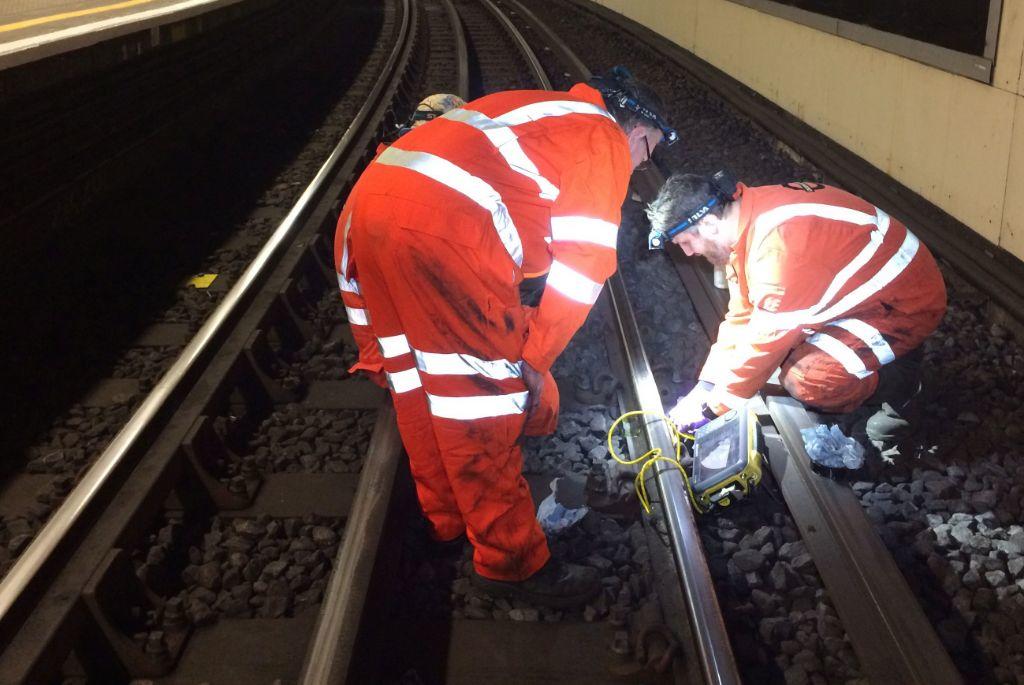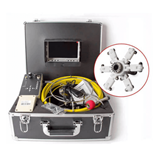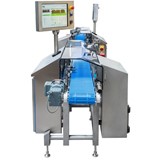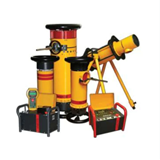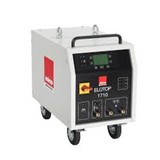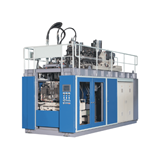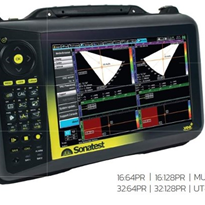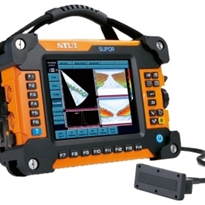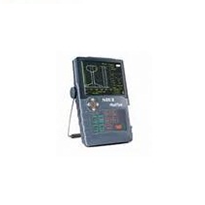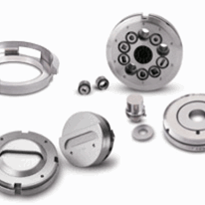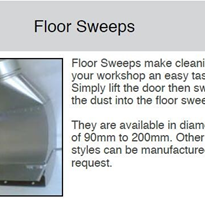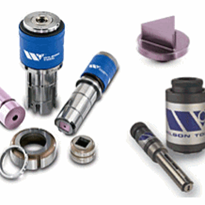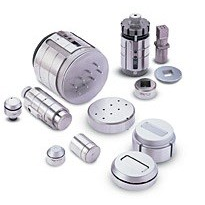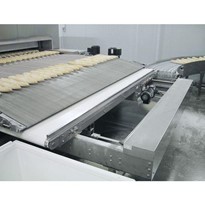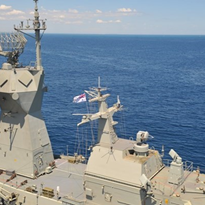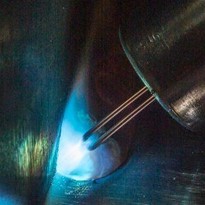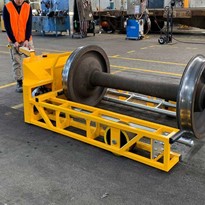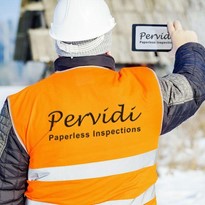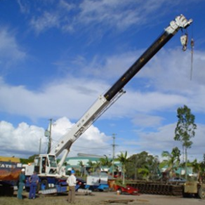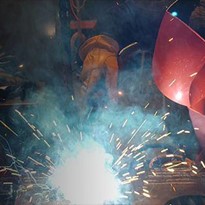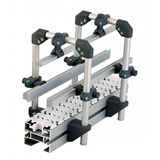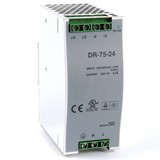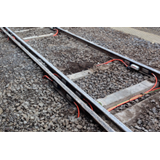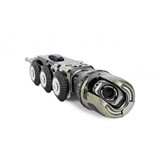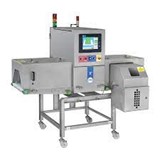Level X NDT worked with London Underground to develop a solution and Russell Fraser Sales is proud to introduce this innovative equipment technology to Australia.
1. Introduction
The London Underground system has been steadily expanding since the Metropolitan Railway opened in 1863 with just 8 stations and 6km of track each way. Currently London Underground (LUL) contains 270 stations, and 400 km of operational track. It is estimated that this track contains around 50,000 welds, many produced using the Aluminothermic process. Whilst this process is extremely reliable, manufacturing defects can sometimes occur.
With so many joints it is inevitable that there will be a few fractures. Heavier trains and the introduction of digital signalling have increased reliability requirements and impact on track load Additionally, some lines now run for 24 hours, reducing inspection times.
Analysis of weld related track breakages has shown that:
- Defect origination mechanisms are typically either weld porosity, or cracking resulting from weld induced stresses, a particular cracking issue was ‘hot tears’ i.e. movement of the joint before the weld had fully cooled.
- Some of the broken welds had been in use for years before failing. Often these breakages are associated with nearby track work, which has changed the stresses on welds.
All new welds carried out on the underground network are independently inspected within 28 days of cast. While cracking or porosity are cause for rejection where visible on the surface, this approach cannot find ‘hidden’ defects.
LUL were in possession of the Sonatest Prisma phased array instrument. The author had provided training to LUL while working at Sonatest and was asked to assist with additional training and assistance in developing procedures.
2. Constraints
- Like all railways, track access is limited to non-operating hours, and safety is paramount. Any potentially unsafe situation must be identified immediately, so that appropriate precautions can be implemented before trains run.
- Existing Welding Inspectors are qualified and experienced welders but are not ultrasonic NDT personnel. It is desirable that procedures allow them to carry out the work with limited additional training.
- It is desirable that the weight and bulk of equipment is minimised so that the NDT equipment, can be carried by one staff member.
- It was necessary to comply with many LUL and railway standards such as procedure and equipment approval.
3. Initial investigations.
Three different approaches were evaluated:
3.1. Shear-wave angle beam scan of the foot of the rail.
This is a reasonably straightforward test, similar in many ways to a conventional butt-weld plate inspection. Results were generally unambiguous – once operators had seen a ‘real crack’ they were unlikely to be confused by surface geometry and similar indications. This technique was used for inspection of the rail foot.
3.2. Shear wave angle beam scan for weld porosity
While this was initially expected to be a promising technique it was found that:
- Work–hardening and similar effects on the top of the rail made it very inconsistent on installed rails.
- The normal level of ‘weld noise’ varied significantly and thus it was difficult to create criteria to reliably distinguish scattered porosity defects from normal welds, especially without very consistent calibration. small variations in material attenuation could greatly affect sensitivity.
- In a few cases there were bolt holes obstructing regions of the weld, making it difficult or impossible to inspect them.
- Although this technique has some advantages it was felt that without complicating the procedure to ensure very consistent calibration, results were likely to be difficult to interpret.
3.3. Longitudinal wave ‘zero-degree’ scan for weld porosity
This is the approach that was eventually selected. A 16-element probe was used with a scan over +/- 20 degrees. This gave a ‘clean’ response on a good weld, it was thus much easier to evaluate, and identification of defects did not require a precise calibration. Tests were carried out on several samples containing defects due to porosity. The rail had been in use for some years before it broke: Because the weld is ‘full’ of porosity the energy is all reflected at the top of the weld and the lower section is ‘quiet’. Operators are taught to recognise this as a sign of gross porosity.
Isolated indications present in a more familiar manner. Attempts were made to induce deliberate porosity in this weld. After investigation it was milled down to investigate the indications.
4. Procedure development.
As noted in the constraints, weight is a critical aspect for the practical implementation, so calibration / verification procedures were developed using the lightweight CB87M calibration block already in wide use in the railways. A standard kit was developed containing all phased array inspection related items. This was issued to operators along with the phased array instrument.
A key point was to simplify the procedure so that it could be used by relatively unskilled (in NDT) operators. Accordingly, the procedure had to be tolerant of minor variations between probes of the same type, and a simple verification technique was developed. Other than checking correct operation no attempt was made to ‘fine calibrate’ the test. Reporting is intended to be simple process – pass, fail or ‘monitor’ actions are applied (typically the monitor category applies to minor porosity or indications where the operator felt uncertain about ‘minor’ indications). The procedure specifies that all ‘fail’ or ‘monitor’ indications are to be recorded, screen images taken and emailed to LUL NDT experts, and, in the case of a ‘fail’ appropriate track protection and minimum actions are to be taken immediately.
5. Implementation.
After testing and investigation of new, suspect and in-service welds by LUL NDT specialists, the procedure was ready to be rolled out as part of the routine weld inspection. Welds are inspected visually and dimensionally at the time of manufacture and must have an independent final inspection within 28 days of being placed into service, this now included phased array inspection.
6. Operator Training
As most of the weld inspection personnel have minimal ultrasonic experience, it was necessary to develop an appropriate training course assuming minimal prior knowledge. The course that was developed contained classroom training covering theory, use of the equipment and the detailed procedures. A brief exam was included. Followed by on track practical / mentoring comprising one night with instruction as necessary and one night with minimal assistance to confirm competence.
London Underground now have greater confidence in all new welded joints and expect to see positive performance improvements as the new procedures are introduced throughout the network.


